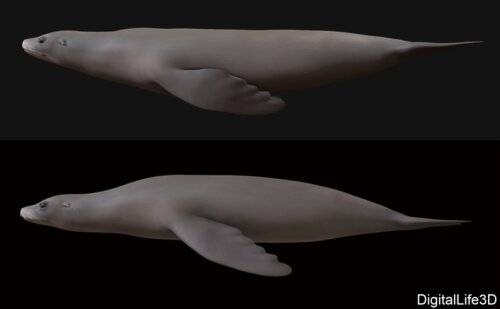Promoter: Sam Van Wassenbergh
Co-promoter: Leonard Dewaele

Subject: California sea lions are foreflipper-based swimmers, meaning they primarily generate thrust using their large, wing-like forelimbs. The hind flippers and body are mainly used for steering. This swimming mode allows for remarkable maneuverability and acceleration, but presumably it also has a few hydrodynamic trade-offs. The large foreflippers are assumed to increase form drag during the recovery phase or during gliding. On the other hand, the foreflippers are streamlined, hydrofoil-shaped and can be adducted to the body, which both reduces the expected amount of drag. Here, computational fluid dynamics models will be run based on one or more realistic 3D models from photogrammetry scans while the pinnipeds are swimming naturally in a pool. Forces on the head, body, and flippers will be quantified and evaluated.
Techniques: 3D surface model manipulation, computational fluid dynamics, force analysis, flow pattern inspection.